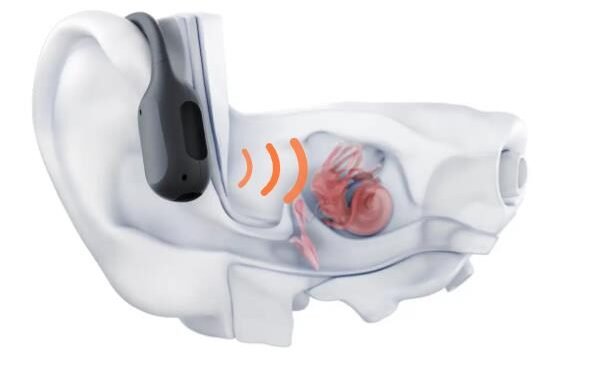In the realm of audio technology, bone conduction headphones have emerged as a groundbreaking innovation, offering a unique listening experience. Unlike traditional headphones that transmit sound through the air and into the ear canal, bone conduction headphones utilize a different approach. They bypass the outer and middle ear, delivering sound directly to the inner ear through the bones of the skull. This cutting-edge technology not only opens new avenues in audio enjoyment but also provides practical solutions for those with hearing impairments.
The bone conduction headphones’ basis is based on the natural phenomenon of bone conduction, which is one of the ways humans experience sounds. Normally, sound waves flow through the air and into the ear canal, vibrating the eardrum. These vibrations are subsequently conveyed to the cochlea in the inner ear via the middle ear’s small bones. Bone conduction, on the other hand, sends sound waves directly to the cochlea, skipping the eardrums.
The transducers of bone conduction headphones are at the heart of this technology. These transducers work differently than standard drivers found in air-conduction headphones. Instead of air, they vibrate against the bones around the ear (typically the cheekbones or jawbone). These vibrations pass through the bone and reach the cochlea, where they are translated into electrical signals and transmitted to the brain, where they are interpreted as sound.
The capacity of bone conduction headphones to keep the ear canals open is one of its most significant advantages. This allows users to maintain awareness of their surroundings, making these headphones excellent for outdoor activities such as running or cycling, when situational awareness is essential. Furthermore, for people who have conductive hearing loss, which occurs when the eardrum or middle ear is injured, bone conduction headphones are a potential alternative to standard hearing procedures.
While bone conduction headphones may not deliver the same level of acoustic richness as high-end air-conduction headphones, technological developments have substantially enhanced their performance. When compared to older models, modern bone conduction headphones provide crisper sound, better bass response, and less vibration discomfort. As a result, they are a viable solution not just for persons with hearing impairments, but also for the average consumer looking for a safer and more conscious listening experience.
Another application of bone conduction technology is in specific professional and military applications. In situations when typical headphones are impracticable or dangerous, bone conduction devices provide a solution that allows for communication while leaving the ears free and unobstructed. This technology, for example, can aid firemen and combat forces by allowing them to receive audio communication without affecting their situational awareness or the effectiveness of their protective gear.
Furthermore, the introduction of wireless bone conduction headphones has increased the technology’s convenience and accessibility. These wireless models use Bluetooth to connect to gadgets, removing the need for wires and making them more versatile for a variety of activities. As wireless technology advances, we should expect significant improvements in these headphones’ connectivity and battery life, boosting their usability and appeal.
Despite their numerous advantages, bone conduction headphones have certain drawbacks. They may not, for example, provide the same amount of noise isolation as in-ear or over-ear headphones. This means that they may not be the greatest choice for listening to audio in extremely noisy surroundings. Furthermore, even though technology has advanced, some users may still find the sense of vibration on their skin odd or uncomfortable, particularly at higher volumes.
Furthermore, there is growing interest in integrating bone conduction technology with virtual and augmented reality systems. Bone conduction headphones can deliver an immersive auditory experience in these applications without separating the user from their environment, which is critical for spatial awareness in virtual landscapes. This feature makes them excellent for use in training simulations, educational settings, and interactive gaming, where maintaining a connection to the actual world is advantageous.
To summarize, bone conduction headphones are more than just an innovative audio device; they represent a substantial advancement in the application of sound technology. The breadth of this technology is large and varied, ranging from offering a safer listening experience for the public to assisting persons with hearing impairments, and from professional use in challenging circumstances to possible uses in virtual reality. As technology advances, we can expect bone conduction technology to permeate more facets of our lives, providing unique solutions to audio consumption and communication difficulties.












